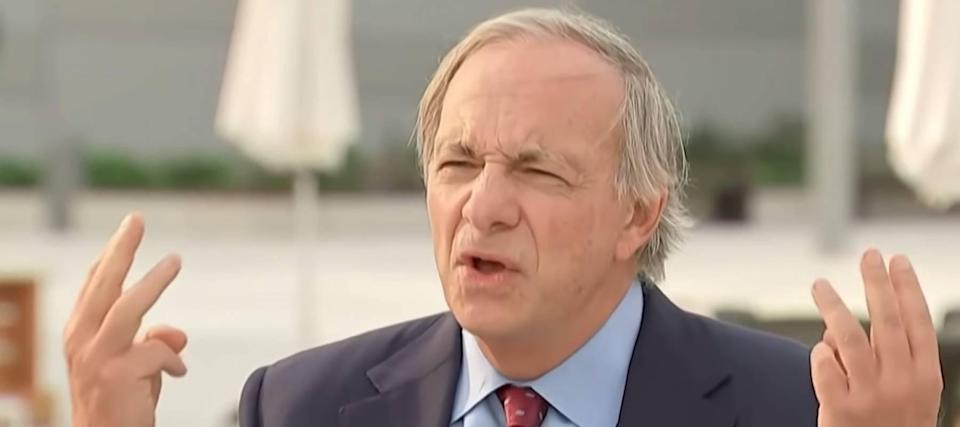
Some say cash is king. But according to Ray Dalio, founder of the world’s largest hedge fund Bridgewater Associates, it may not be wise to keep too much of your investment money in cash (or bonds) these days.
“This printing of money and buying of debt assets has driven interest rates so low that cash and bonds are stupid to own,” he wrote in a post on LinkedIn. “I think one should consider minimizing one’s ownership of cash and bonds in dollars, euros, and yen.”
The billionaire added that investment funds should be put into a highly diversified portfolio assets that include stocks and inflation-hedge assets.
In November, the consumer price index rose 6.8% on a year-over-year basis, marking its fastest increase since June 1982.
Simply put, consumers are taking a big hit in their purchasing power.
So let’s take a look at three ways to hedge against inflation — one could be worth pouncing on with some of your extra cash.
Gold

Gold is often considered the go-to safe haven asset.
It can’t be printed out of thin air like fiat money, and its value is largely unaffected by economic events around the world.
The yellow metal has helped investors preserve wealth for centuries. Some believe this could be another one of its shiny moments.
You can buy gold coins and bars at your local bullion shop. You can also look at large gold mining companies. If gold prices go up, these miners will earn higher revenue and profits, which tend to translate into higher share prices.
For instance, big miners like BHP Group, Rio Tinto, and Vale typically do well during tough times for other sectors.
There’s no need to start big. These days, you can build your own diversified portfolio just by using your leftover digital nickels and dimes.
Bitcoin

Once considered a niche asset, Bitcoin has entered the main stage.
One reason people are increasingly adopting cryptocurrency is because they believe in its potential as an inflation hedge. Central banks can print money all they want, but the number of bitcoins is capped at 21 million by mathematical algorithms.
Dalio recently said that Bitcoin is “almost a younger generation’s alternative to gold.”
The price of Bitcoin has pulled back substantially in recent weeks, but is still up 60% year to date. If you want to buy Bitcoin directly, be aware many exchanges charge up to 4% in commission fees just to buy and sell crypto. A few investing apps charge 0%.
Investors can also gain exposure through companies that have tied themselves to the crypto market.
For instance, software technologist MicroStrategy has built a stash of 122,478 bitcoins. Electric vehicle giant Tesla holds around 42,000 bitcoins.
Then there are pick-and-shovel plays like Coinbase Global, which runs the largest cryptocurrency exchange in the U.S.
It’s true that these companies are all quite pricey, trading at between $230 and $1,000 per share. But you could get a smaller piece of Tesla or Coinbase by using an app that allows you to buy fractions of shares with as much money as you are willing to spend.
Fine art

Stocks are volatile, cryptos make big swings to either side, and even gold is not immune to the market’s ups and downs.
That’s why if you are looking for a hedge, it could be worthwhile to check out a real, but overlooked asset: fine art.
Contemporary artwork has outperformed the S&P 500 by a commanding 174% over the past 25 years, according to the Citi Global Art Market chart.
And it’s becoming a popular way to diversify because it’s a real physical asset with little correlation to the stock market.
On a scale of -1 to +1, with 0 representing no link at all, Citi found the correlation between contemporary art and the S&P 500 was just 0.12 during the past 25 years.
Earlier this year, Bank of America investment chief Michael Harnett singled out artwork as a sharp way to outperform over the next decade — due largely to the asset’s track record as an inflation hedge.
This article provides information only and should not be construed as advice. It is provided without warranty of any kind.
Source: finance.yahoo.com
